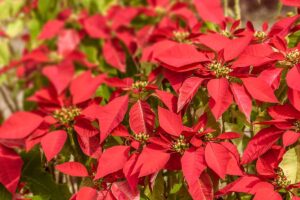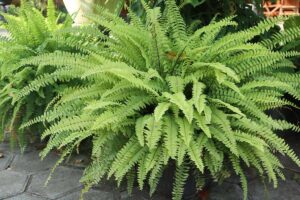Try walking into a store around Christmastime and not running into at least one display of vibrant red, pink, yellow, green, and white poinsettias.
They’re everywhere during the holidays, which is weird, because they’re weedy tropical shrubs from Mexico.

We link to vendors to help you find relevant products. If you buy from one of our links, we may earn a commission.
The story of how these valued medicinal plants went from being ground in the molcajetes of the Aztecs for use as medicine to the Christmas displays of homes around North America is one that involves Christian missionaries, clever California growers, and Johnny Carson.
While you’re sitting around the table with friends and family during the holidays, you’ll be able to fill everyone in on how these colorful specimens became undisputed leaders of Christmas decor.
If you’re curious how it all happened, here’s what’s coming up in this guide:
What You’ll Learn
What Is a Poinsettia?
Most people call it poinsettia, botanists know it as Euphorbia pulcherrima, the Aztec people refer to it as cuetlaxochitl, which means “brilliant flower,” and the Maya knew it as k’alul wits, translating to “ember flower.”
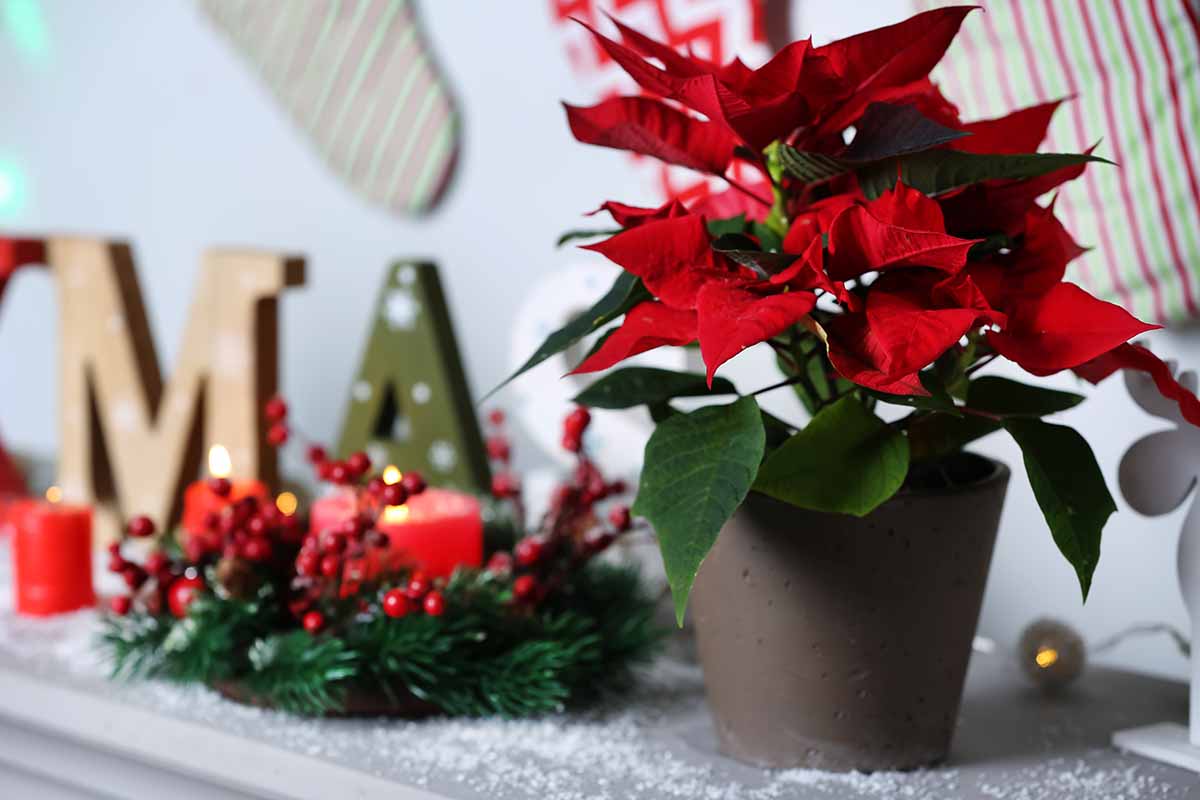
People in Mexico have used poinsettia shrubs medicinally for centuries and have enjoyed the bright red leaves ornamentally for just as long.
For example, the Aztec people used the plants to make a red dye and as an antirheumatic.
People in the US didn’t really know about E. pulcherrima until ambassador and botanist Joel Roberts Poinsett visited an area south of Mexico City near Taxco de Alarcón and saw the colorful plant.
He sent a few cuttings back to South Carolina in 1828.
Today, the plant is named for him, and he is often credited with “discovering” poinsettias, but, of course, the people of Mexico were well acquainted with them well before Europeans stumbled onto them.

Before we talk about how the poinsettia came to be associated with Christmas in Mexico, let’s clarify a few of our terms.
The colorful part of the plant isn’t the flower. It’s a leaflike growth known as a bract. At the end of the branches and inside the bracts, if you look closely, you’ll see tiny yellow flowers. These are the actual blossoms. The green parts of the shrub are the leaves.
If you aren’t sure how to care for your own poinsettia, please visit our guide, which will explain everything you need to know.
Now, let’s look at the origins of how E. pulcherrima became known as Christmas flowers.
Mexican Folklore
E. pulcherrima initially became associated with Christmas in Mexican Christian folklore after Catholic missionaries arrived in the region in the 1500s.
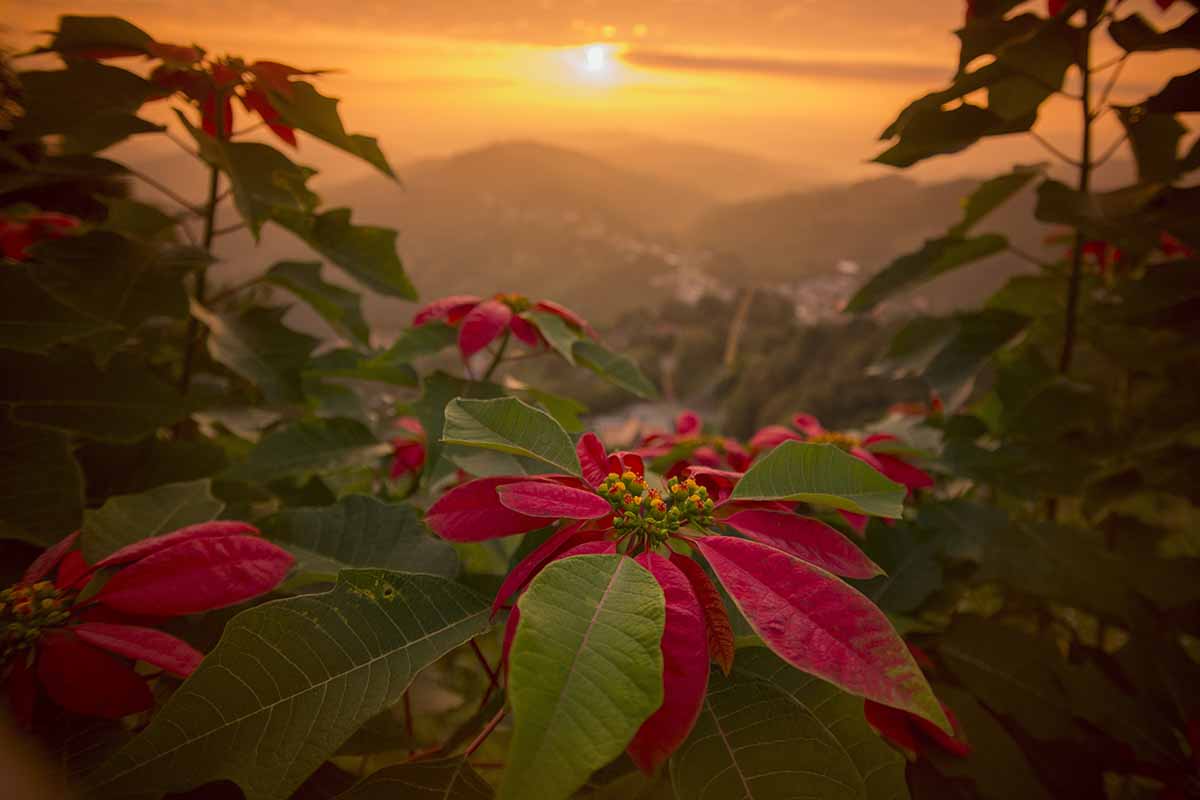
The missionaries couldn’t find holly with which to decorate their manger scenes, as was tradition in England, so they substituted the red and green of the poinsettia instead.
Over time, believers in Mexico decided that the flower-like bracts looked like the Star of Bethlehem stained red by the blood of Christ, and the plant became a common sight in churches in Mexico during the holidays.
US Origins
American growers mostly cultivated the plants as cut flowers for arrangements because poinsettias are naturally leggy and pretty fussy.
Introduced in 1924, ‘St. Louis Red’ was the first cultivar in the US to find commercial success as a potted plant.
But E. pulcherrima might have mostly stayed in Mexico and as a novelty cut flower in the US if not for California growers and the magic of marketing, which took the few specimens in the US and expanded the plant into a massive commercial success.
Onto California
The plant probably wouldn’t have caught on as indoor holiday decor if not for California growers who grafted the original shrubs onto naturally smaller specimens to make something more compact.
In nature, these plants are leggy and weedy. They look more like sparse shrubs and not at all the lush, compact specimens we keep in our homes.
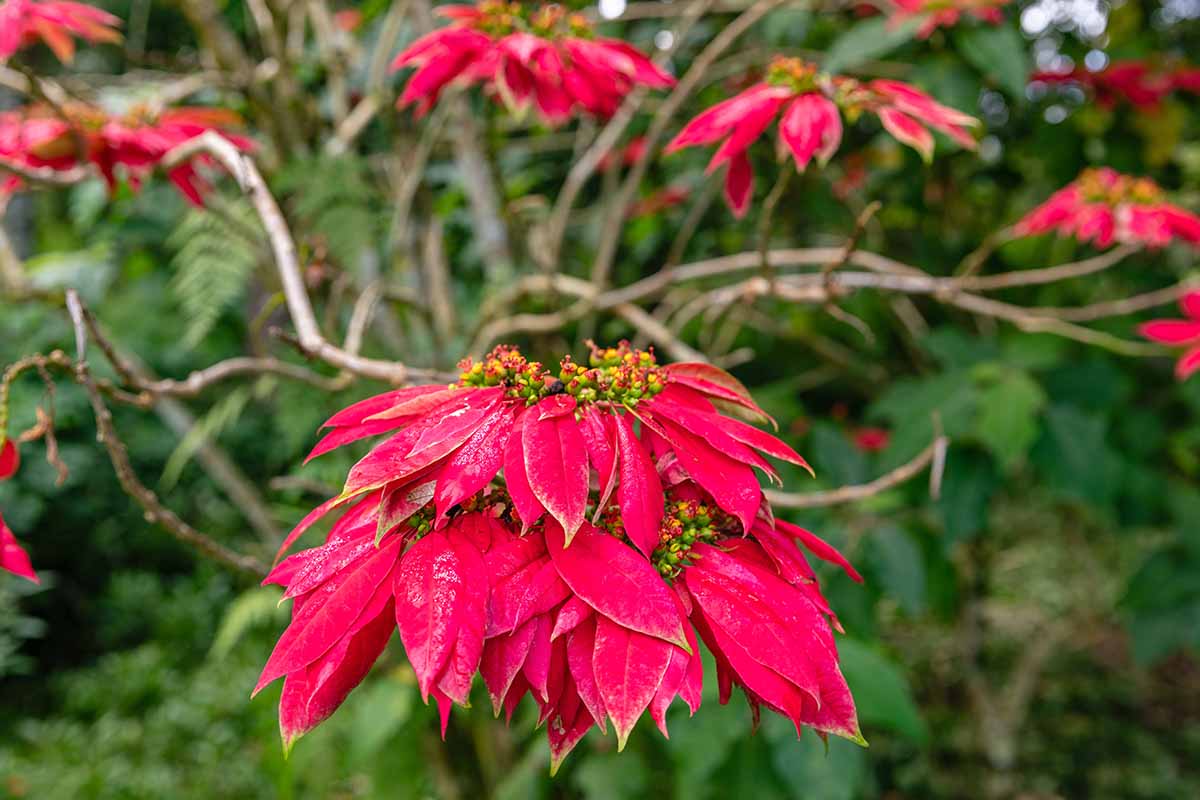
Paul Ecke, a self-taught breeder based in California, used ‘St. Louis Red’ as the parent plant for his breeding efforts.
Establishing his business in 1909, he saw an opening in the market for potted flowers.
He worked to create a tougher plant that had more of the colorful bracts than the species and that was compact enough to grow and be shipped in containers.
Realizing that he had a potential moneymaker on his hands, he titled his creation the “Christmas Flower” and set about making it famous.
Throughout the 1920s, he sent the potted specimens to television programs, which used them as background interest on their sets – and some continued to do so into the 2000s.
If you’ve ever seen the massive poinsettia display in the background of Johnny Carson’s The Tonight Show, you were looking at Ecke’s efforts.
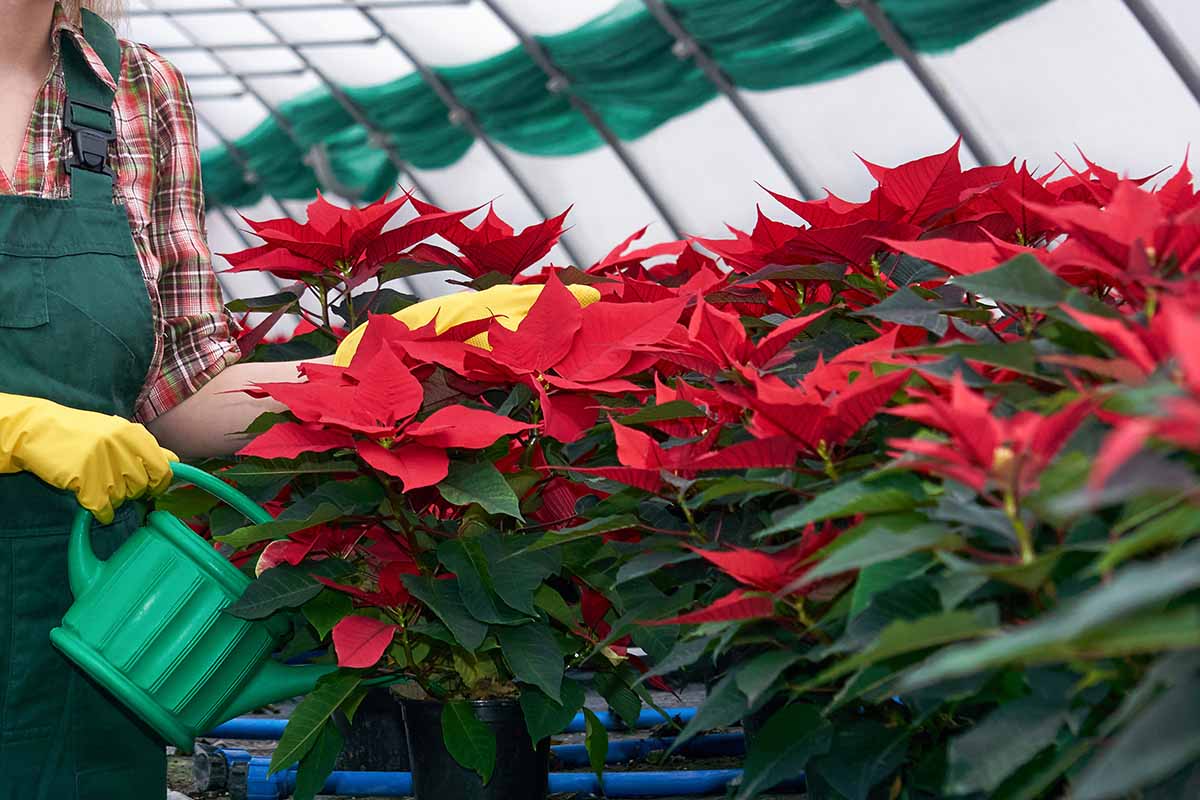
From there, they became wildly popular, accounting for a quarter of all potted plants sold in the US.
Most of them are now grown outside of the US, but the Ecke family continues to breed new specimens with unique growth habits, bract shapes, and colors.
Celebrate the Season With Colorful Poinsettias
It’s clear that poinsettias have become more than just a religious symbol of Catholic folklore.
My Jewish friends line their entry with E. pulcherrima for Hanukkah, my Protestant neighbors fill their windows with them at Christmas, and I use them as a background for my secular holiday village.
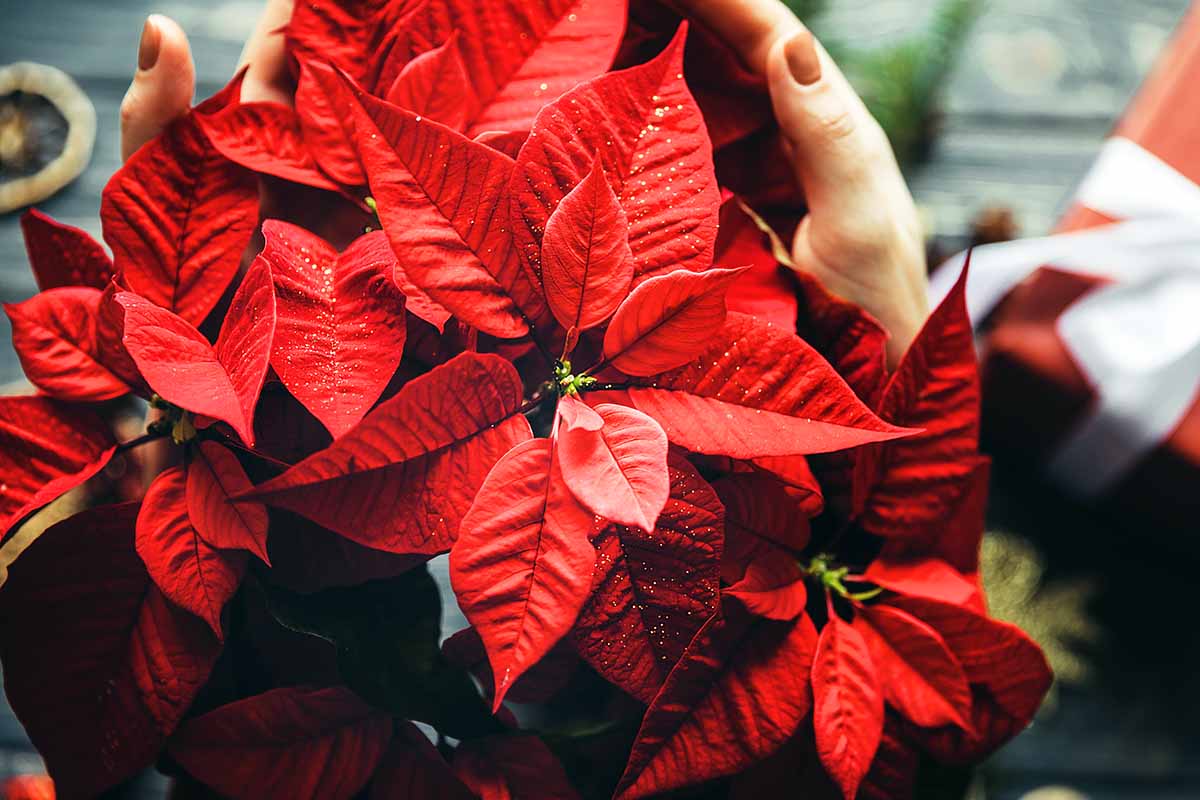
Ecke had a real winner on his hands when he bred his poinsettias, and we are all enjoying the fruits of his labors.
How do you use your Christmas flowers? Do you keep them around after the holidays? Let us know in the comments.
Are you looking for a bit more information on caring for poinsettias? We’ve got you covered. Check out these guides next:
